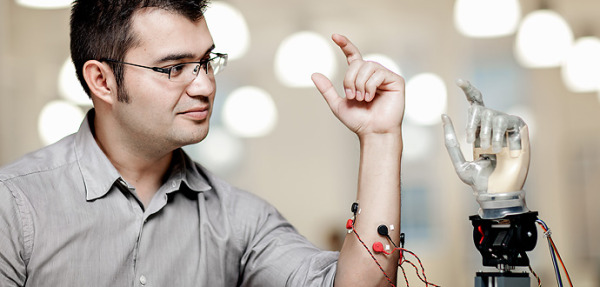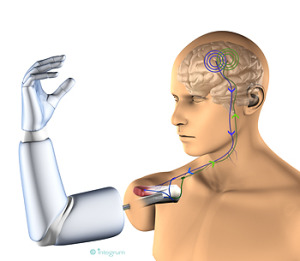Thought-Controlled Artificial Limbs. A Robotic Revolution For Amputees

The world's first implantable robotic arm controlled by thoughts is being developed by a postdoctoral student. The first operations on patients will take place this winter, changing the lives of amputees.
In this project, named the OPRA Implant System, the researchers are planning to implant the electrodes directly on the nerves and remaining muscles instead. Since the electrodes are closer to the source and the body acts as protection, the bio-electric signals become much more stable. This also makes the solution easily concealed, developing further from the previous foray into mind-controlled limbs by University of California.
Currently, electrodes are placed over the skin to pick up bodily signals. The problem is that the signals change when the skin moves and are affected by sweat, altering the interface. Instead, through this new method of implanting those electrodes directly to the patient’s nerves, Catalan hopes to recreate the same level of control over a biological limb, via their own nerves and muscles.
Osseointegration is used to enable the signals inside the body to reach the prosthesis. The electrical impulses from the nerves in the arm stump are captured by a neural interface, which sends them to the prostheses through the titanium implant. These are then decoded by sophisticated algorithms that allow the patient to control the prosthesis using his or her own thoughts.
 The artificial hand can mimic a living hand. The motors in each finger can be controlled individually and simultaneously, for example, with a turning motion of the wrist. It is possible to demonstrate how the system works by using electrodes which capture myoelectric signals on the surface of the arm, much alike Sarif Industries' LIMB.
The artificial hand can mimic a living hand. The motors in each finger can be controlled individually and simultaneously, for example, with a turning motion of the wrist. It is possible to demonstrate how the system works by using electrodes which capture myoelectric signals on the surface of the arm, much alike Sarif Industries' LIMB.
"This is a huge benefit for both the individual and to society," Max Ortiz Catalan, student at Chalmers University of Technology in Sweden commented. “By testing the method on a few patients, we can show that the technology works and then hopefully get more grants to continue clinical studies and develop the technology further."
Surgical trials are due to begin this winter, with a view to making Catalan's technology available in 2013.
Source: Chalmers
Jason England

